I use the following code to initialize the graph denoted below:
#include <boost/config.hpp>
#include <iostream>
#include <fstream>
#include <boost/graph/graph_traits.hpp>
#include <boost/graph/adjacency_list.hpp>
using namespace boost;
typedef adjacency_list_traits<vecS, vecS, directedS> Traits;
typedef adjacency_list<
vecS, vecS, directedS,
property<
vertex_name_t, std::string,
property<vertex_index_t, int,
property<vertex_color_t, boost::default_color_type,
property<vertex_distance_t, double,
property<vertex_predecessor_t, Traits::edge_descriptor>
> > > >,
property<
edge_index_t, int,
property<edge_capacity_t, double,
property<edge_weight_t, double,
property<edge_residual_capacity_t, double,
property<edge_reverse_t, Traits::edge_descriptor>
> > > > >
Graph;
int main() {
Graph g(4);
property_map<Graph, edge_index_t>::type E = get(edge_index, g);
property_map<Graph, edge_weight_t>::type cost = get(edge_weight, g);
// Create edges
Traits::edge_descriptor ed;
int eindex = 0;
ed = (add_edge(0, 1, g)).first;
cost[ed] = 1;
E[ed] = eindex++;
ed = (add_edge(0, 2, g)).first;
cost[ed] = 1;
E[ed] = eindex++;
ed = (add_edge(1, 3, g)).first;
cost[ed] = 1;
E[ed] = eindex++;
ed = (add_edge(2, 3, g)).first;
cost[ed] = 1;
E[ed] = eindex++;
//At this point, how can I change the cost of the second edge, (0,2), to 2 most efficiently?
}
After adding the four edges, initially with cost of 1, I would like to change the cost of the second edge, (0,2), to 2.
How do I obtain the appropriate edge descriptor most efficiently?
One method I tried was the following:
graph_traits < Graph >::out_edge_iterator ei, e_end;
for (tie(ei, e_end) = out_edges(0, g); ei != e_end; ++ei) {//search through out edges from vertex 0
if (target(*ei, g) == 2) {//if the edge ends at vertex 2
cost[*ei] = 2;
}
}
This seems to be somewhat inefficient since it has to iterate through all edges starting at a node. Is there any method that is more efficient?
